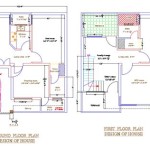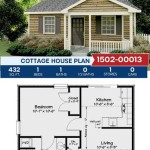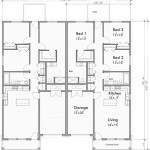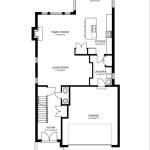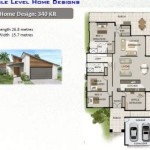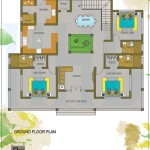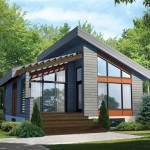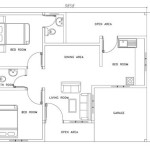Mies van der Rohe's Timeless House Plans: A Legacy of Modernist Architecture
### Introduction: Unveiling the Visionary Designs of a Master Architect Mies van der Rohe, a true luminary of modern architecture, left an indelible mark on the architectural landscape with his innovative and influential house plans. His designs continue to inspire and captivate architects, homeowners, and design enthusiasts alike, showcasing his visionary approach to creating spaces that are both aesthetically pleasing and functionally efficient. This article takes an in-depth look into the iconic house plans of Mies van der Rohe, exploring their defining characteristics, design principles, and the lasting impact they have had on architecture. ### Mies van der Rohe: A Pioneer of Modernism Born in 1886 in Aachen, Germany, Ludwig Mies van der Rohe rose to prominence as a leading figure of the modernist movement. His architectural philosophy emphasized simplicity, clarity, and the use of modern materials, prioritizing functionalism and the honest expression of structure. Van der Rohe sought to create spaces that were visually serene, devoid of unnecessary ornamentation, and characterized by an open and airy flow. His iconic dictum, "Less is more," encapsulates his belief in the power of minimalism and the reduction of design elements to their essential forms. ### Key Design Principles of Mies van der Rohe's House Plans 1.Open Floor Plans:
Van der Rohe championed open floor plans, blurring the boundaries between different functional areas. This approach allowed for a sense of spaciousness, enhanced visual connectivity, and a fluid movement of space. 2.Transparency and Visual Connectivity:
Large windows, glass walls, and sliding doors became signature elements of his houses, creating a seamless connection between the interior and the exterior. This emphasis on transparency fostered a sense of openness and brought the surrounding natural environment into the living spaces. 3.Emphasis on Horizontal Lines:
Mies van der Rohe's houses exude a sense of horizontality through the use of long, sweeping lines and cantilevered roofs. This focus on horizontality creates a visual balance and emphasizes the horizontal flow of space. 4.Minimalist Aesthetic:
Van der Rohe believed in the elegance of simplicity. His house plans are devoid of unnecessary ornamentation and decorative details, allowing the beauty of the materials and the inherent qualities of space to take center stage. 5.Integration of Nature:
Mies van der Rohe's houses often showcased a harmonious relationship between architecture and nature. He carefully positioned his buildings to take advantage of natural light, views, and surrounding landscapes, creating a sense of tranquility and serenity. ### Iconic House Plans by Mies van der Rohe 1.Farnsworth House (1946-1951):
Located in Plano, Illinois, the Farnsworth House epitomizes Mies van der Rohe's minimalist design principles. The glass-enclosed structure consists of a single rectangular pavilion supported by eight steel columns. The house is a testament to van der Rohe's mastery of transparency, creating a seamless connection between the interior and the surrounding landscape. 2.Tugendhat House (1928-1930):
Built in Brno, Czech Republic, the Tugendhat House is considered a masterpiece of modern architecture. The house features an innovative layout with open living spaces and large glass windows that blur the boundaries between interior and exterior. The Tugendhat House showcases van der Rohe's emphasis on functionalism and his attention to detail, evident in the carefully designed furniture and integrated lighting fixtures. 3.Barcelona Pavilion (1928-1929):
Originally designed as the German Pavilion for the 1929 International Exposition in Barcelona, Spain, the Barcelona Pavilion is a prime example of van der Rohe's mastery of space and proportion. The pavilion features a simple rectangular plan with four marble walls and an open roof. The carefully placed partitions and furniture create distinct zones within the space, demonstrating van der Rohe's skill in spatial organization. ### Legacy and Lasting Impact Mies van der Rohe's house plans have left an undeniable mark on modern architecture. His emphasis on simplicity, functionality, and the integration of nature has influenced generations of architects. His innovative designs continue to inspire contemporary architecture, shaping the way we conceive and create living spaces. Mies van der Rohe's house plans embody the essence of modernism, showcasing his unwavering commitment to creating spaces that are both aesthetically captivating and functionally efficient. His legacy continues to resonate with architects and homeowners alike, demonstrating the enduring power of his architectural vision.
Plan Of Farnsworth House By Mies Van Der Rohe Source D Spaeth Scientific Diagram

35615 Jpg 741 557 Pixel Mies Van Der Rohe Plan

A 50 X House For Mass Ion 1951 An Unbuilt Project By Socks

Plan House Mies Van Der Rohe Architecture Pesquisa Google Arquitectura Contemporánea Planos De

A Virtual Look Into Mies Van Der Rohe S Core House Archdaily

Fluid Space Continuum The Fusion Of Interior And Exterior Ludwig Mies Scientific Diagram

Ad Classics Landhaus Lemke Mies Van Der Rohe Archdaily

Mies Van Der Rohe Architectural Exhibition Fifth Biennial Sao Paulo Brazil Floor Plan The Art Institute Of Chicago

3 Plan Edith Farnsworth House 14520 River Road Plano Kendall County Il Library Of Congress

History Mies Van Der Rohe Haus

